I know you’re here to find the best non-toxic sunscreen. But, I actually believe we should let our kids (and ourselves) experience small amounts of sunlight on bare skin. Vitamin D is important!
Of course, it’s not always possible to get just ten or fifteen minutes of sun each day. Fortunately there are a bunch of brands of non-toxic sunscreen that you can feel good about using. This guide will help you understand the problems with most brands of sun protection lotions, sprays, and creams–and help you pick the best non-toxic sunscreen for your family.
Let’s get into it.

Why Use Non-Toxic Sunscreen?
Conventional sunscreen is loaded with chemicals, including parabens, well-established carcinogens, and oxybenzone, an endocrine disruptor that may generate free radicals when exposed to ultraviolet light.
Some researchers even suspect oxybenzone to be the hidden cause of the increase in melanoma, although most studies have found no such link. Still, add this potential risk to the risk of vitamin D deficiencies, and standard sun safety doesn’t feel so safe!
In addition to the active ingredients, sunscreen also contains a number of inactive ingredients, some of which are concerning. The non-toxic sunscreens we call Best Stuff in this guide are free of the Bad Stuff we talk about in our other skincare Guides–synthetic fragrances, PEG chemicals, propylene glycol, alumina, etc.
Note: These days, almost all sunscreen is free of PABA (para-aminobenzoic acid), and so this once ubiquitous—and possibly carcinogenic—sunblock ingredient is no longer a concern.

Felix and me in Mexico in 2010.

What Are the Ingredients to Avoid in Sunscreen?
I encourage you to choose sunscreens that use only mineral ingredients (more on these below), but you should know that not all chemical sunscreens are equally bad. Here is a run-down of most common:
⚠️ Avobenzone. We consider this Okay Stuff. If you’re going for chemical instead if mineral sunscreen, look for one with avobenzone as the primary active ingredient.
⚠️ Octisalate and octocrylene. These are both Okay Stuff, as neither comes with a significant risk to human health. Still, all things considered, I would choose a sunscreen with avobenzone over one with either of these.
❌ Oxybenzone. This is the really bad sunscreen ingredient. It causes cellular damage and endocrine disruption. The AAP recommends avoiding sunscreen with with oxybenzone on kids. The good news: MOST conventional sunscreen is now free of oxybenzone.
❌ Homosalate. This is also very Bad Stuff. The European Commission proposes a concentration limit of 1.4 percent for homosalate. Unfortunately, U.S. sunscreens are currently allowed to have up to 15%. Avoid any sun protection product that has homosalate in it.
It’s worth noting that ALL of these ingredients are absorbed into the body after one use, and can still be detected in the blood weeks after their use, according to studies published by the FDA. Moreover, these ingredients are disastrous to the environment, putting coral reefs in danger of extinction.
What Is the Safest Non Toxic Sunscreen to Use?
Given the dangers of chemical sunscreens, the safest way to avoid sunburn is to use a natural sunscreen that contains “barrier” ingredients, such as titanium dioxide or zinc oxide.
Chemical sunscreen ingredients, like the ones listed above, work by absorbing UV radiation. By contrast, mineral sunscreens work by reflecting the UV radiation.
Because the application of these ingredients leaves skin with a telltale white sheen, nanoparticles are typically used in mineral sunscreens. (Nanoparticles are just teeny microscopic particles that are less than 100 nanometers in diameter.)
There has been some concern that these nanoparticles are small enough to penetrate cell membranes. Normally, our cells recognize foreign material as an invader and block it out, so it’s scary to think that nanparticles could get past that. Fortunately, more recent research suggests that DNA damage from nanoparticles is not very likely.
Instead of nanoparticles, some natural sunscreen producers use “micronized” particles — basically, these are just slightly larger than nanoparticles (so larger than 100 nanometers). Research suggests that particles must be 50 nanometers or less to penetrate a cell membrane, so micronized minerals in sunscreen should be safe.

Wolfie and me in Aruba in 2014.
Which Sunscreens Are Not Toxic? Zinc vs. Titanium Dioxide
Most mineral sunscreens contain both zinc and titanium dioxide. We have a slight preference for zinc because it is more effective at blocking UVA rays. In addition, titanium dioxide is harmful–even potentially carcinogenic–if inhaled.
For this reason, our favorite non-toxic sunscreen will have more zinc oxide than titanium dioxide, especially when in a spray formulation. But we still think brands that use titanium dioxide can be considered non-toxic sunscreen.



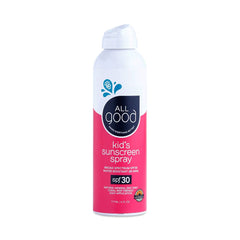
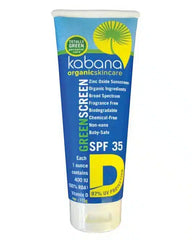
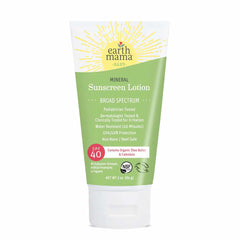
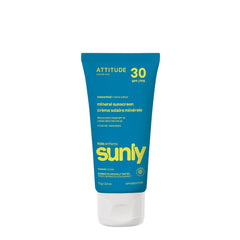


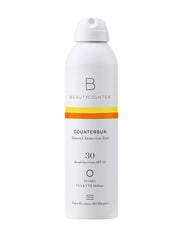
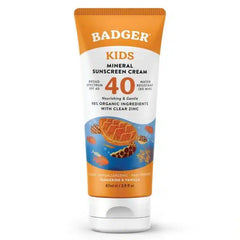

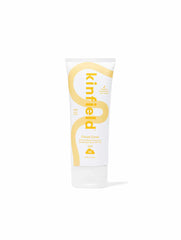
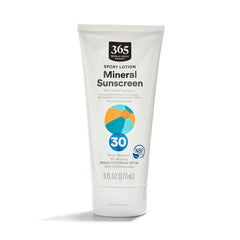
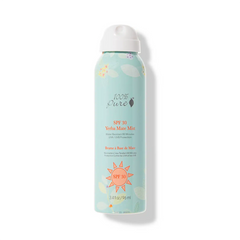


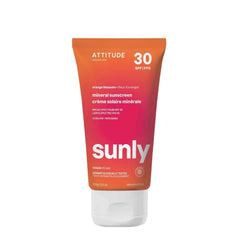




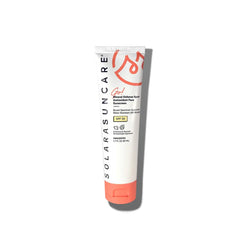



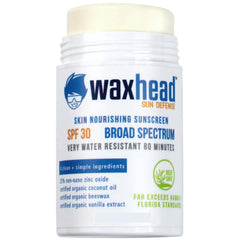

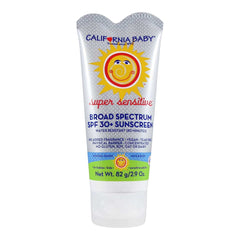

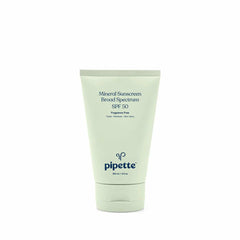







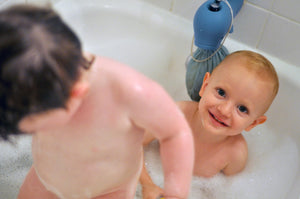



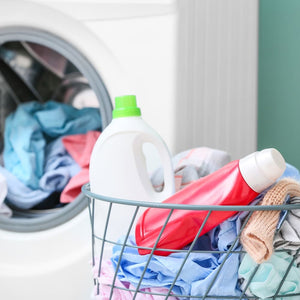
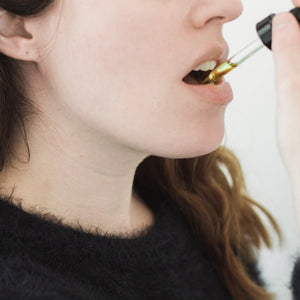
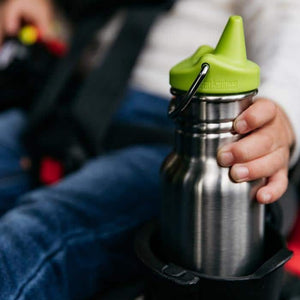
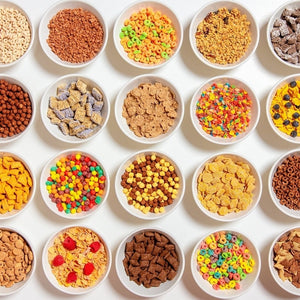
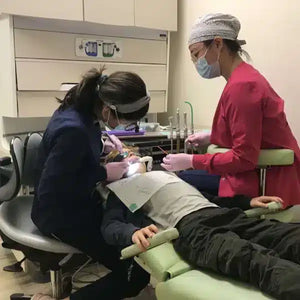
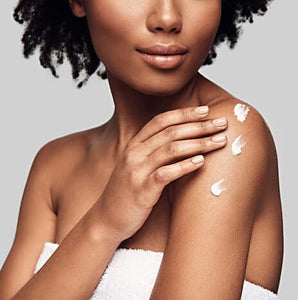

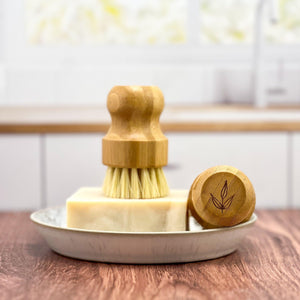
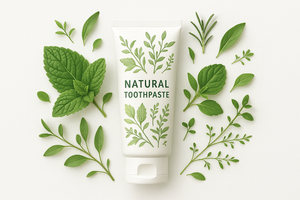
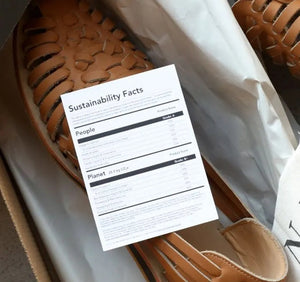

195 comments
Danielle
What about arbonne?
Amanda
Could you please share your thoughts about the cancer council’s products.. Specifically the kids formula.
Thank you!
Allyson Martin
Hi,
I bought the Babo Botanicals sport stick on your recommendation but I think this might be a less expensive alternative brand? Is TJ stick Good Stuff?Have you looked at Trader Joe’s new sunscreen stick? http://www.traderjoes.com/digin/post/mineral-sunscreen-stick
Laura
Hi,
Thank you so much for all of your posts. You have helped me make so many decisions in choosing products for my baby! I have an 8 month old baby with eczema. I was using blue lizard but would like to switch to a waterproof sunbmscreen that goes on smooth. I’m considering Trukid sport. Any ingredients I should be concerned with here? Also, any thoughts on how easy to apply it might be?Julie Gulemi
Thank you so much for all your research! It is helping me so much to change my own life and the lives of other around me.
I was wondering if you knew about the Glossier products. They have a sunscreen that I just purchased for daily use on my face under my makeup. I have been using beautycounter sunscreen but only for the beach! I’d love to know your thoughts. Thank you so much! Julie